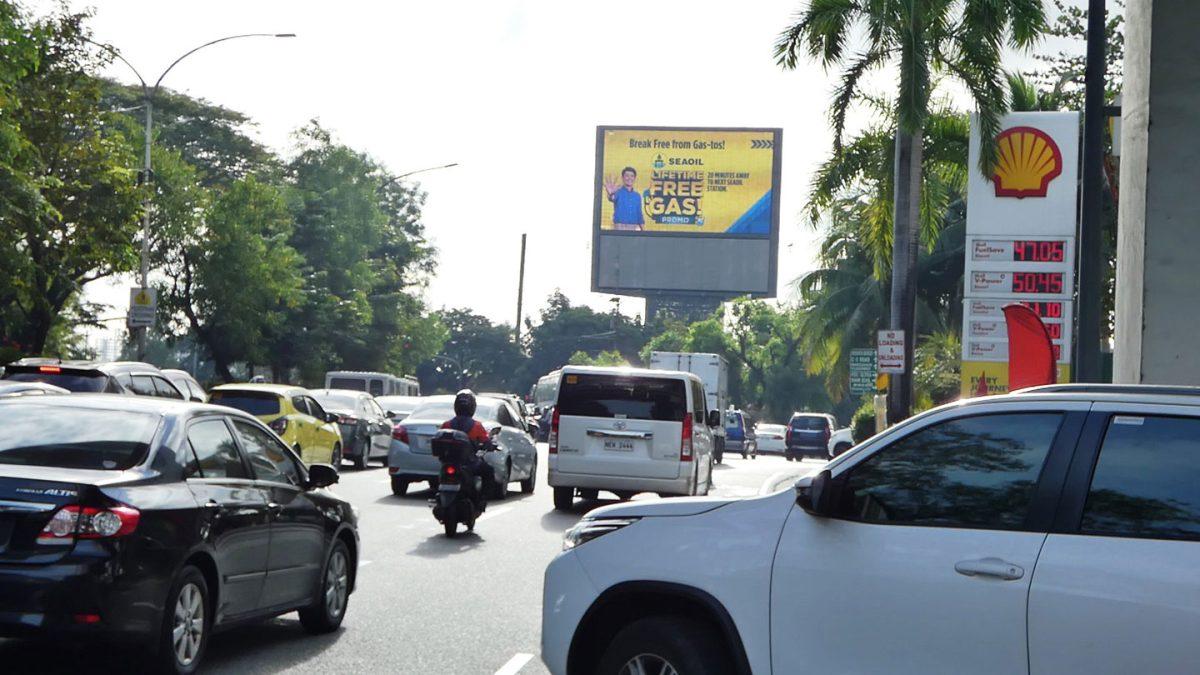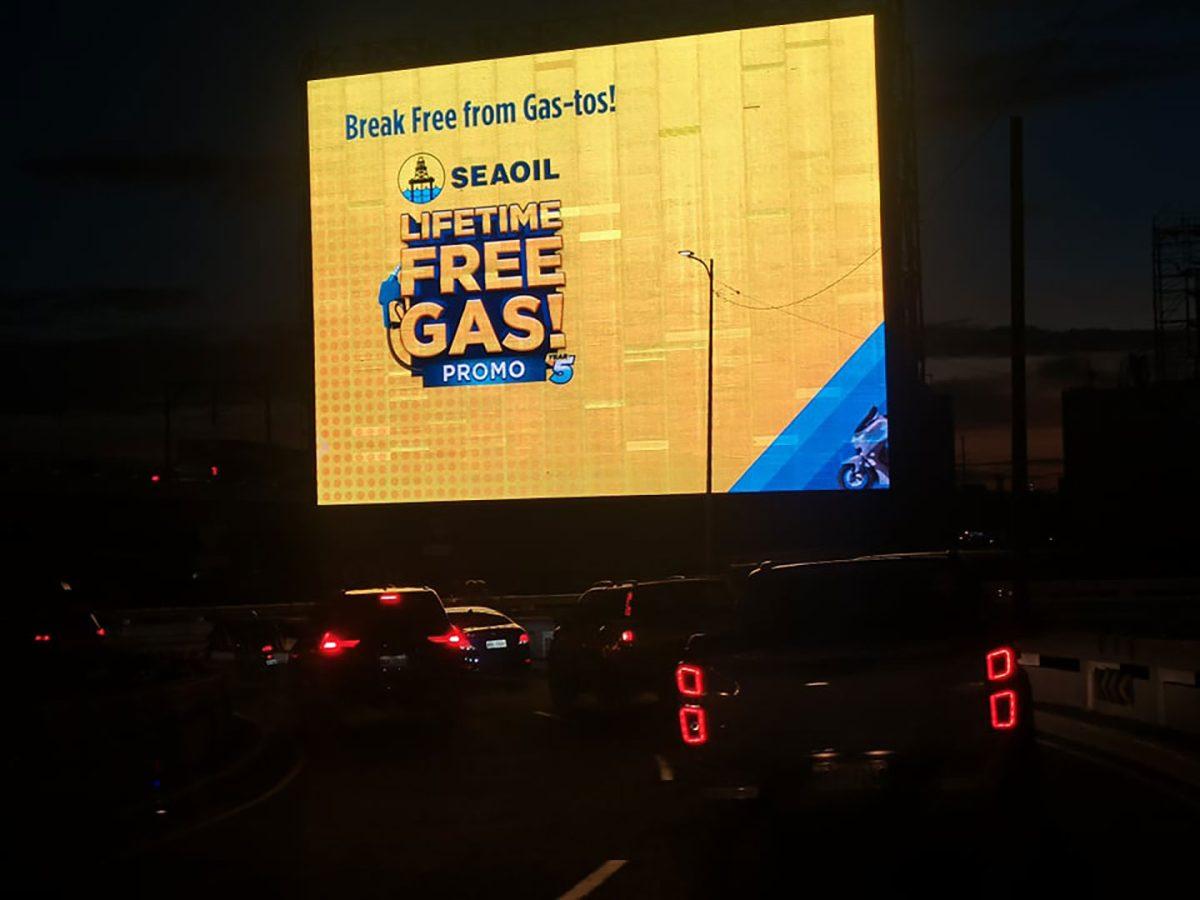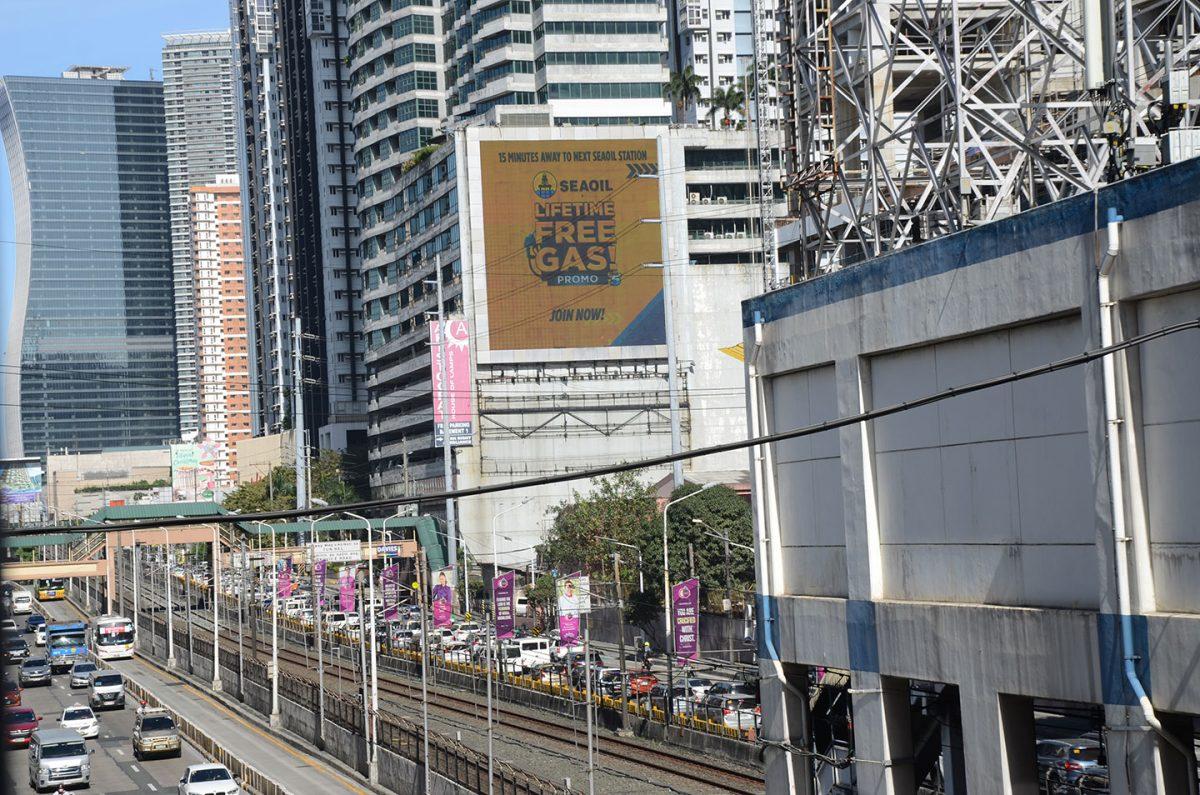MANILA, PHILIPPINES — You’ve probably heard how important data is in the marketing and advertising world today. For this Filipino-owned fuel company, it’s no exception. SEAOIL used real-time data to play location-aware messages guiding passersby to the closest SEAOIL gas station.
The directional campaign was executed by digital firm David & Golyat, together with Digital Out-of-Home (DOOH) advertising technology company Moving Walls and Metropolis Media.
SEAOIL has launched its annual lifetime free gas promotion and in order to drive awareness, the fuel company decided to use live signals to create a personal experience for audiences.
When a passenger comes into the vicinity of the advertisement, the creatives tell you how many minutes you are away from the nearest SEAOIL gas station.
The campaign ran across popular Manila metropolitan streets, as seen in images below:
 This ad played on MC Home Ortigas LED informed passersby that it was ‘20 mins away from the next SEAOIL Gas station’.
This ad played on MC Home Ortigas LED informed passersby that it was ‘20 mins away from the next SEAOIL Gas station’.

While making your way under EDSA Boni MRT, the creatives showcase that you are ‘10 mins away from a chance to win lifetime free gas.’

This was taken on EDSA Magallanes, a limited-access circumferential highway around Manila, the capital city of the Philippines.

A creative placed on Tomas Morato indicates to users they are ‘30 mins away to a SEAOIL station.’

Here at Paragon, users are made aware they are ‘15 mins away to next SEAOIL station.’
The Technology Used
While the content includes a curated distance messaging achieved through the use of Google Maps API, SEAOIL was able to decipher the best DOOH targeting options by understanding its location affinity.
The platform, ‘Moving Audiences’, was able to make SEAOIL’s campaign more efficient by eliminating ad waste and identifying patterns like high-performing sites and traffic hours that match the campaign’s target audiences.
Location-based targeting is highly effective in the outdoor world; it has been used by multiple advertisers to run data-driven Out of Home (OOH) campaigns to drive footfall or face competition from other Points-of-Interest (POIs).
These types of campaigns have gained much popularity among advertisers due to their high resonance that allures the user with related content and messaging. However, the challenge has always been to scale these beyond award-winning case studies.
Other innovative brands have also used contextual advertising to execute exceptional campaigns. Learn the Know-Hows of navigating the Outernet Media using data & emerging technology in the Outernet Playbook.








